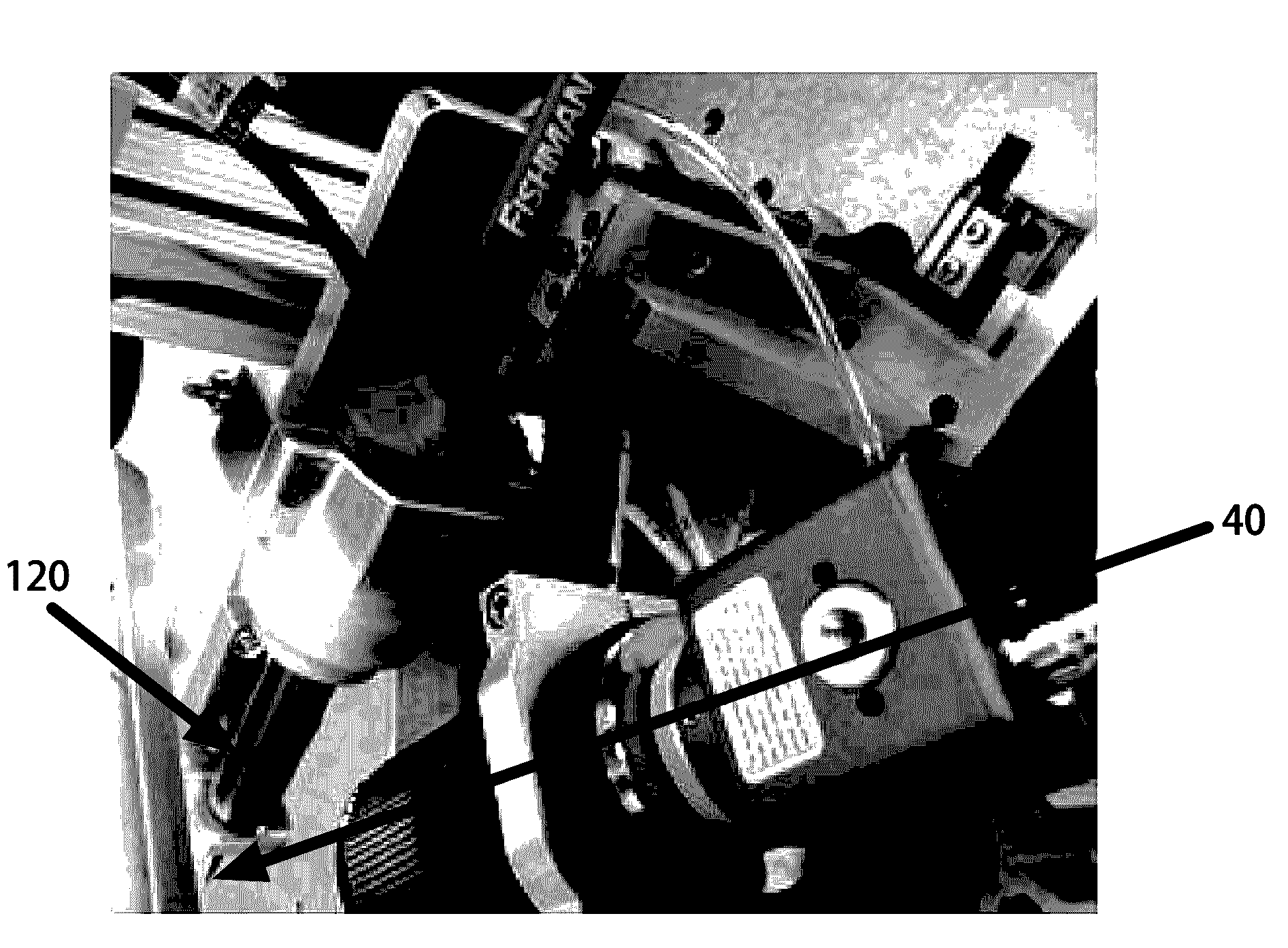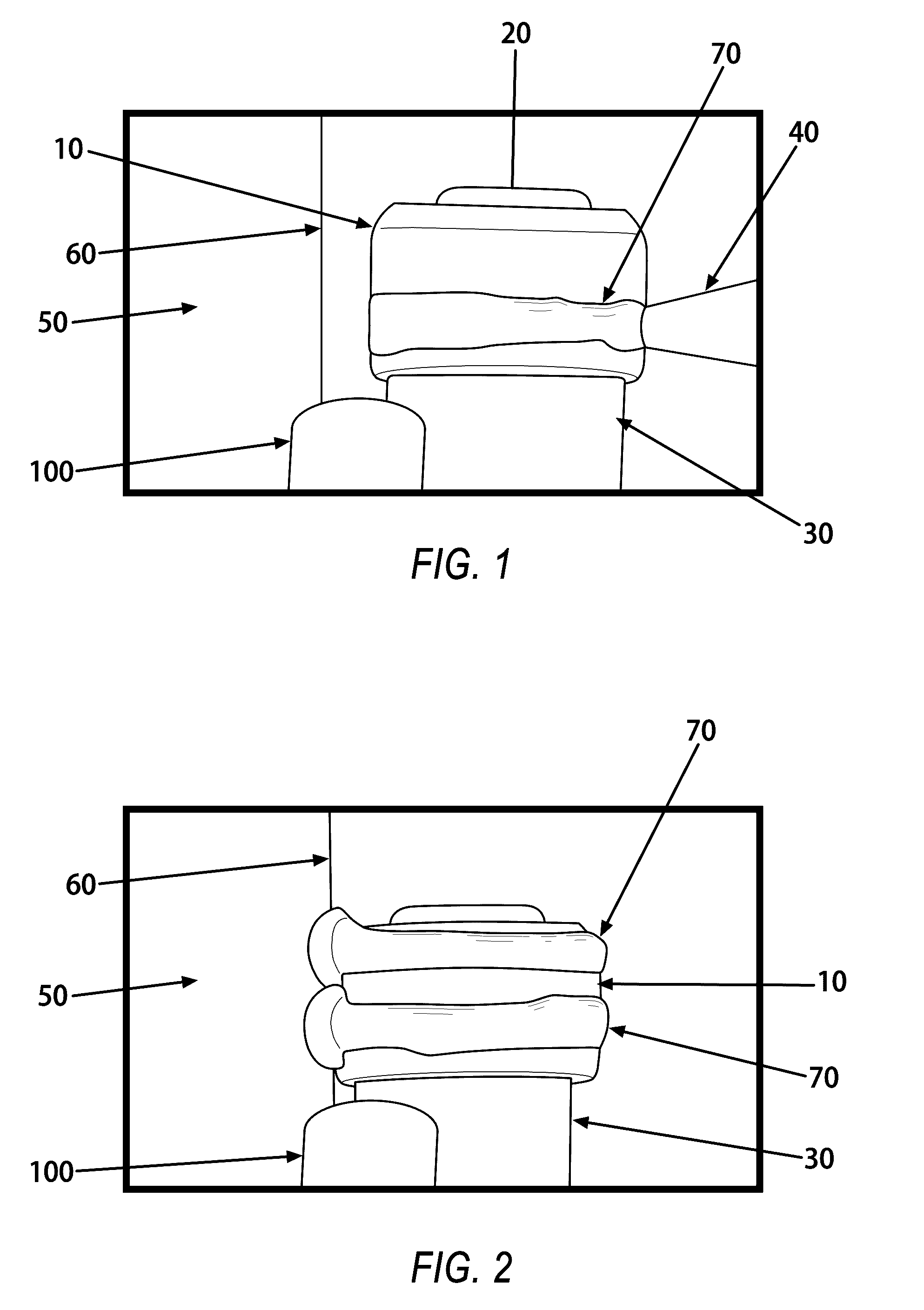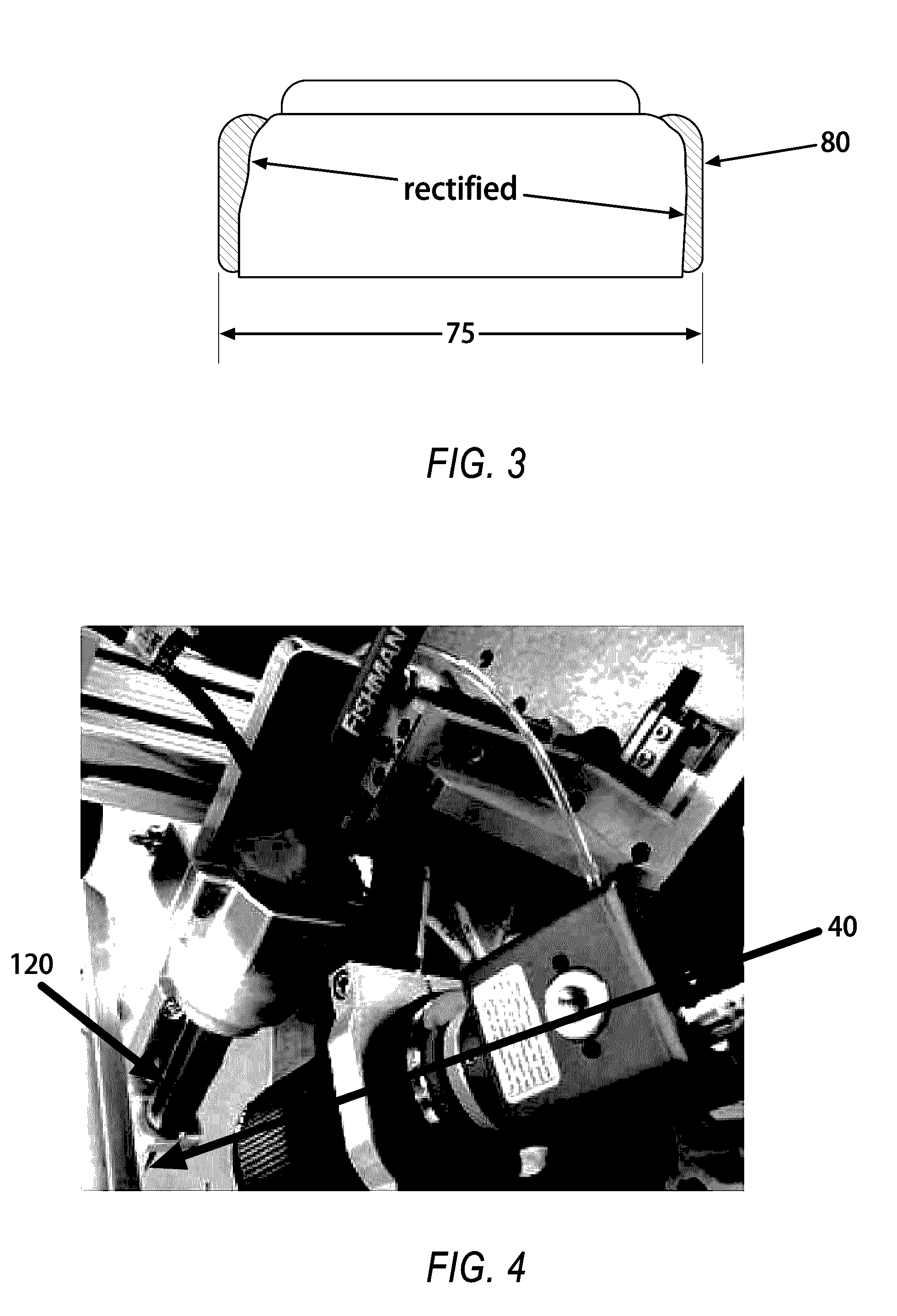Polymer coatings for metal surfaces
a technology of metal surfaces and polymers, applied in the direction of batteries, instruments, cell components, etc., can solve the problem of lack of durability of polymer coatings on metal surfaces
- Summary
- Abstract
- Description
- Claims
- Application Information
AI Technical Summary
Benefits of technology
Problems solved by technology
Method used
Image
Examples
example 1
General Polymer Material Formulations
[0089]In a container, liquid cross-linking agent (e.g., a monomer or oligomer) (5-30%) and a photoinitiator (1-10%) were mixed together to form a first mixture, i.e., mixture 1. In another container, tint (1-5%), fillers (1-10%), and a solvent / solvent mixture (5-15%) were mixed together to form a second mixture, i.e., mixture 2. The separate mixtures were stirred independently using a FlackTek SpeedMixer DAC150FVZ that allowed thorough mixing without introducing air into the system. An epoxy resin (30-80%), mixture 1, and mixture 2 were combined and mixed together using a FlackTek SpeedMixer DAC150FVZ at 2000 rpm for 2 minutes to yield the polymer material 70. In some instances, a commercially available polymer material formulations such as Emcast (commercially available from Electronic Materials, Inc.), Permabond (commercially available from Permabond LLC), Locite (commercially available from Henkel Corporation), and Dymax (commercially availabl...
example 2
[0096]Dymax 728G (90% by weight) was mixed with green tint Evercoat pre-mix (10%) using a FlackTek SpeedMixer DAC150FVZ operated at 2000 rpm for 2 minutes. This mixture was then loaded into a syringe dispenser (Fishman LDS9000 airless applicator) and applied to the rotating cell under a layer of inert gas (N2) using the automated apparatus illustrated in FIG. 8. The polymer material was shaped and smoothed, using wipe material (Scotch Magic tape from 3M with a sticky side up), to obtain the requisite cell diameter. As the cell was rotated, wipe material was pulled away from the cell. A lot code was then printed onto the coated cell with an ImTech inkjet printer using ImTech IS411 black ink. The coated cell was then rotated in front of the UV light in the presence of nitrogen for 20 seconds to cure the polymer material. A Dymax Blue Wave 200 with liquid wand was used as the UV radiation source.
example 3
[0097]Dymax 730BT (90% by weight) was mixed with green tint Evercoat pre-mix (10%) using a FlackTek SpeedMixer DAC150FVZ operated at 2000 rpm for 2 minutes. This mixture was then loaded into a syringe dispenser (Fishman LDS9000 airless applicator) and applied to the rotating cell under a layer of nitrogen using the automated apparatus illustrated in FIG. 8. The polymer material was shaped and smoothed, using wipe material (Scotch Magic tape from 3M with a sticky side up), to the requisite diameter. As the cell was rotating, the wipe material was pulled away from the cell to remove excess polymer material. A lot code was then printed onto the coated cell with an ImTech inkjet printer using ImTech IS411 black ink. The cell was then rotated in front of the UV lamp light guide, in the presence of an inert gas (N2) for 20 seconds, to cure the coating. A Dymax Blue Wave 200 with liquid wand was used as the UV radiation source.
PUM
| Property | Measurement | Unit |
|---|---|---|
| temperature | aaaaa | aaaaa |
| viscosity | aaaaa | aaaaa |
| viscosity | aaaaa | aaaaa |
Abstract
Description
Claims
Application Information
 Login to View More
Login to View More - R&D
- Intellectual Property
- Life Sciences
- Materials
- Tech Scout
- Unparalleled Data Quality
- Higher Quality Content
- 60% Fewer Hallucinations
Browse by: Latest US Patents, China's latest patents, Technical Efficacy Thesaurus, Application Domain, Technology Topic, Popular Technical Reports.
© 2025 PatSnap. All rights reserved.Legal|Privacy policy|Modern Slavery Act Transparency Statement|Sitemap|About US| Contact US: help@patsnap.com



